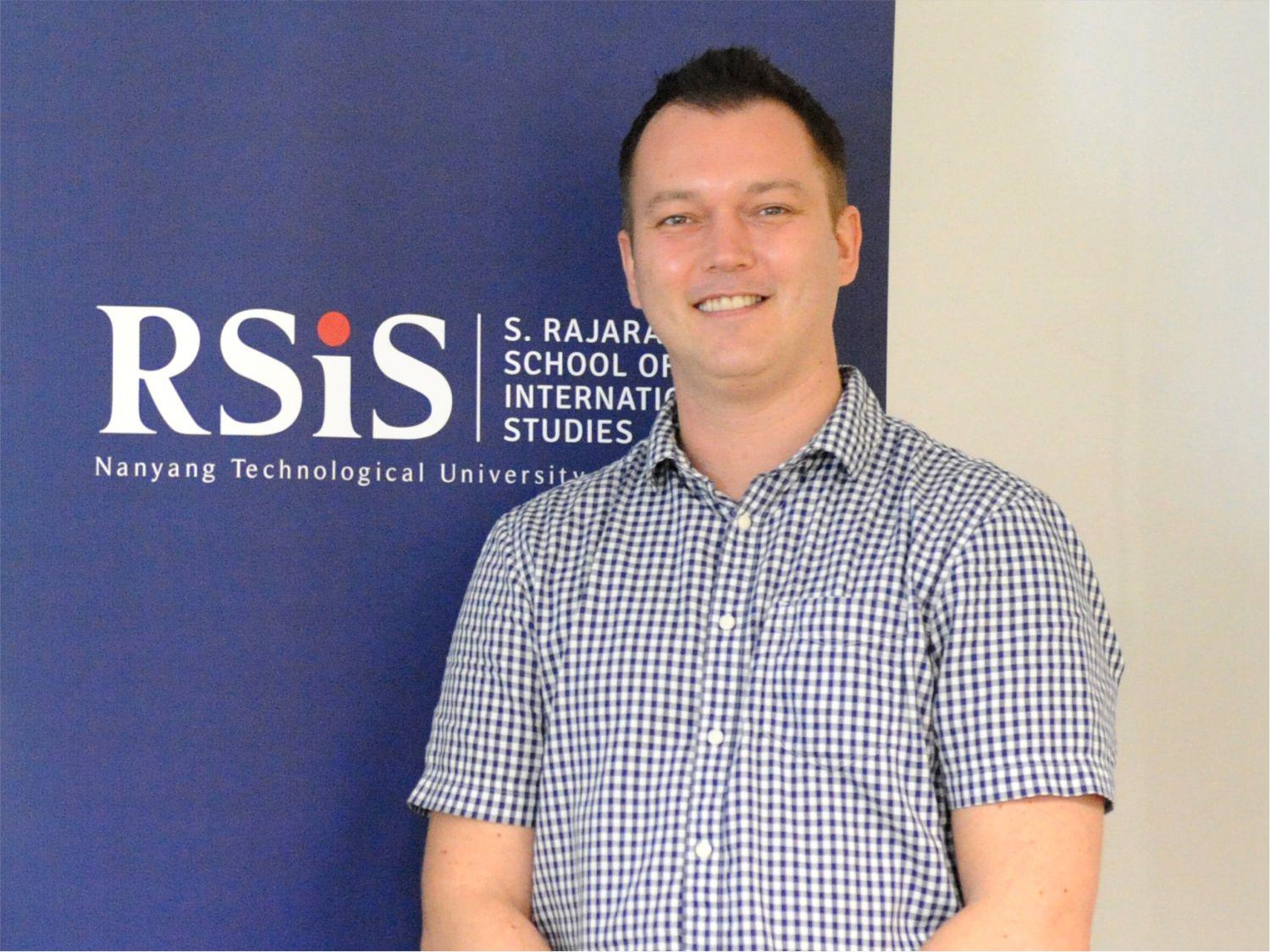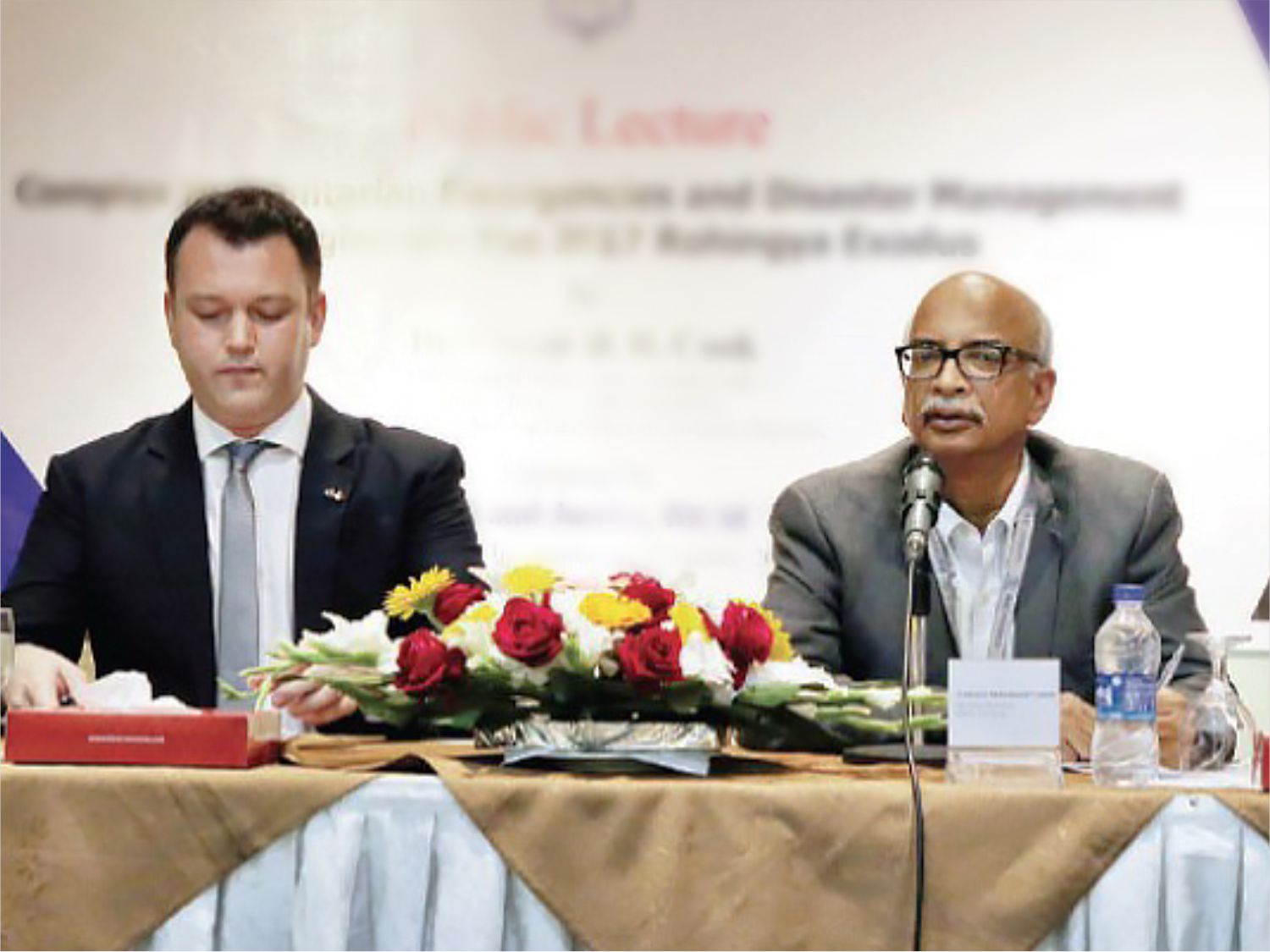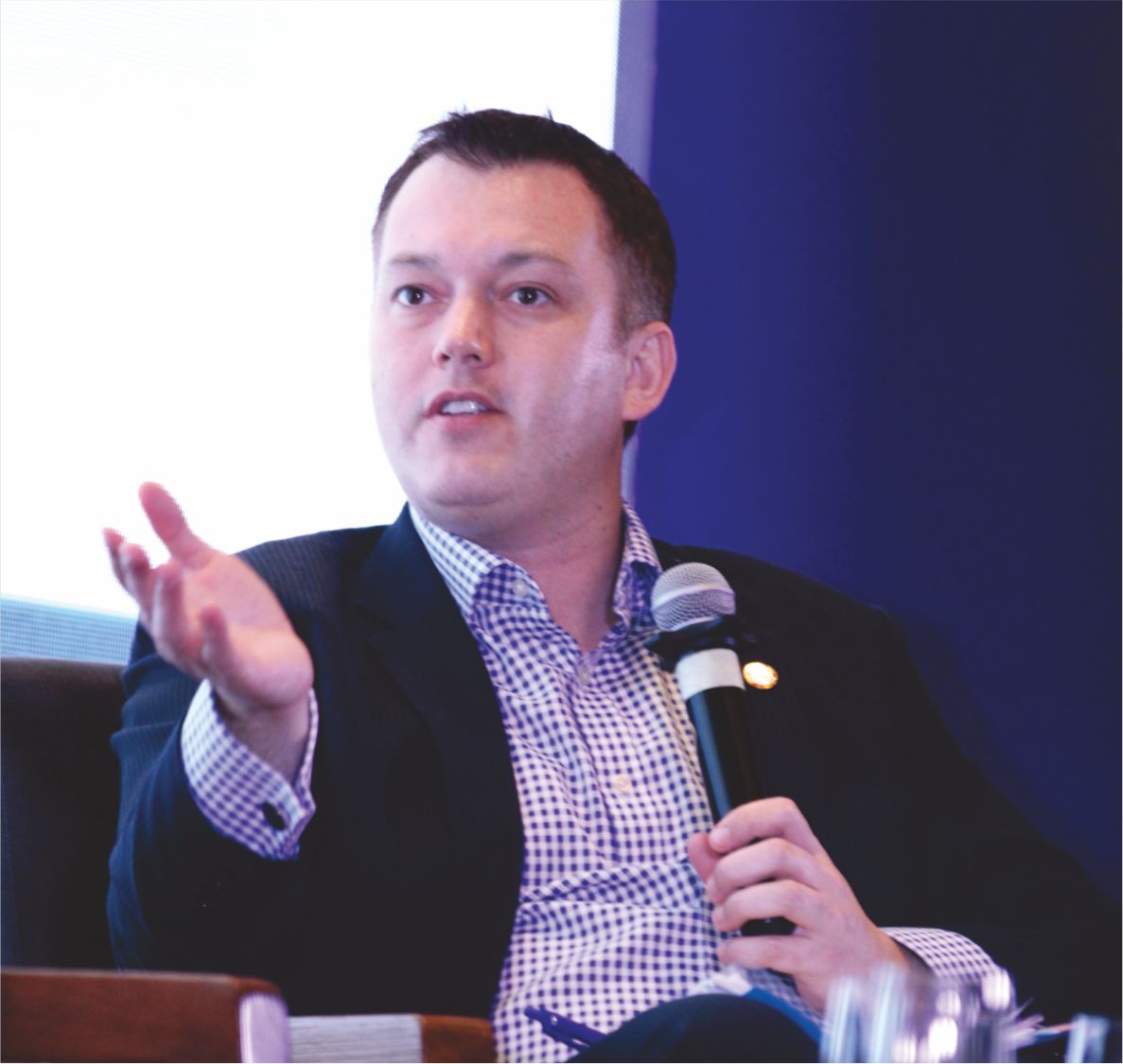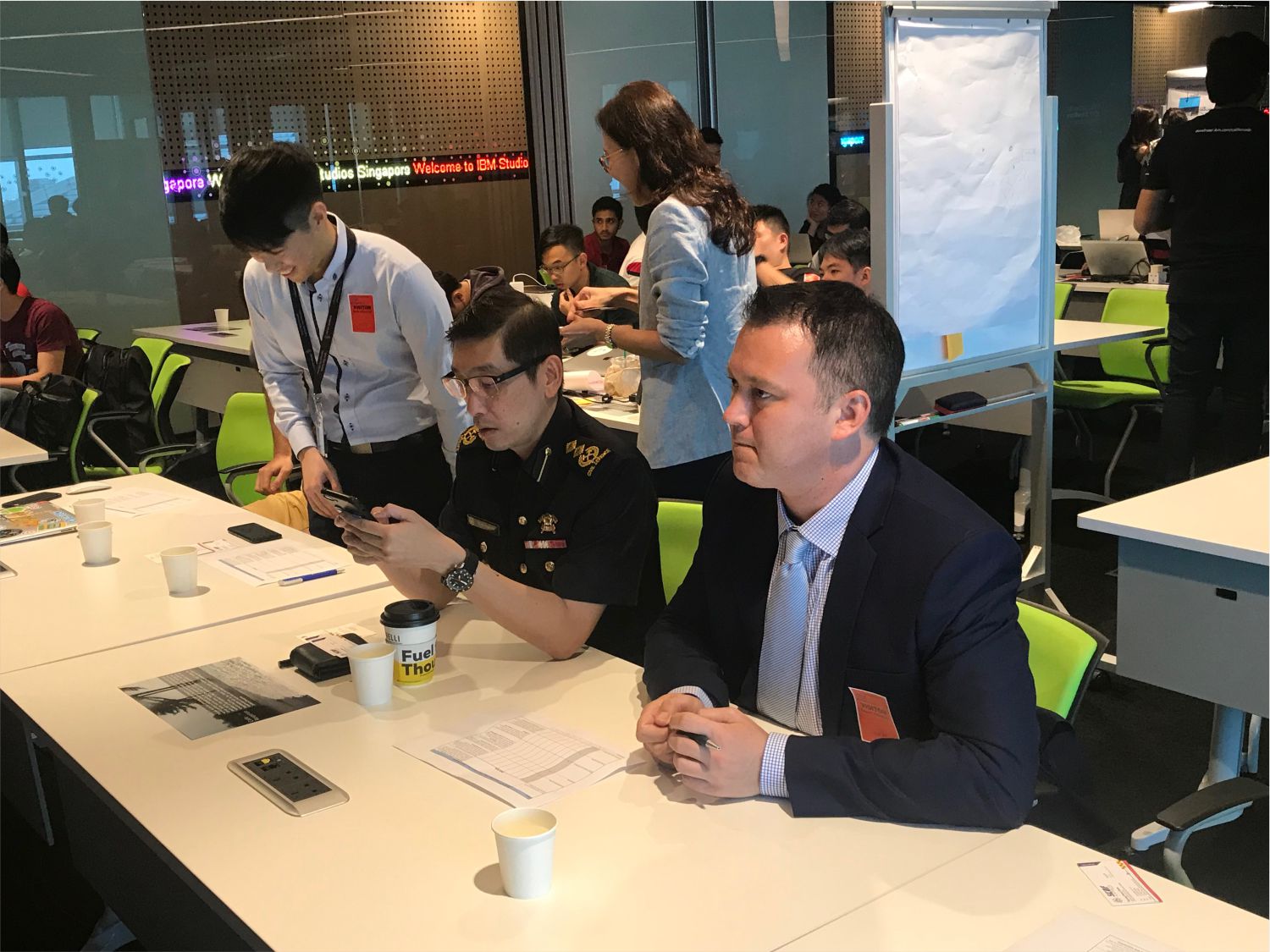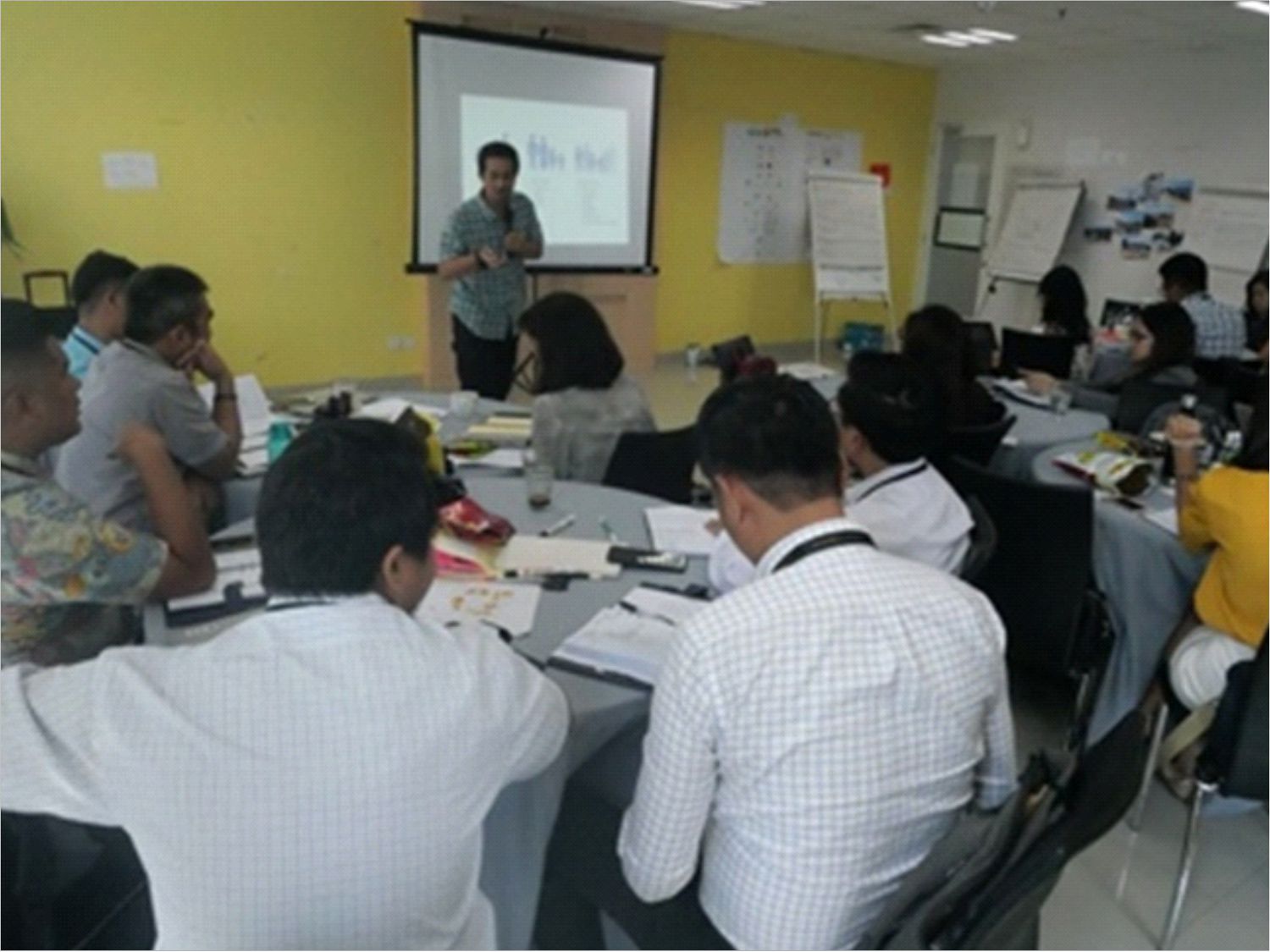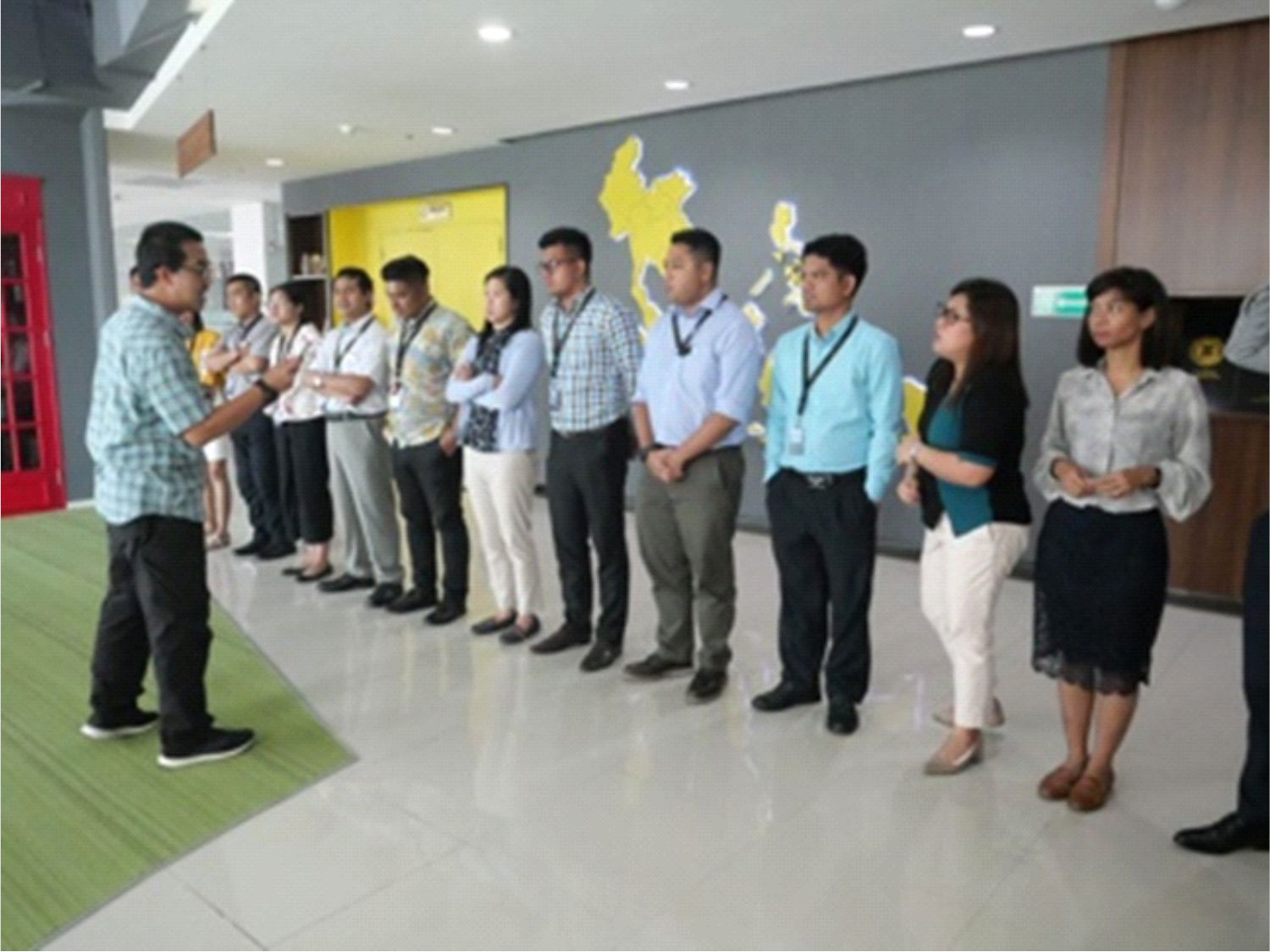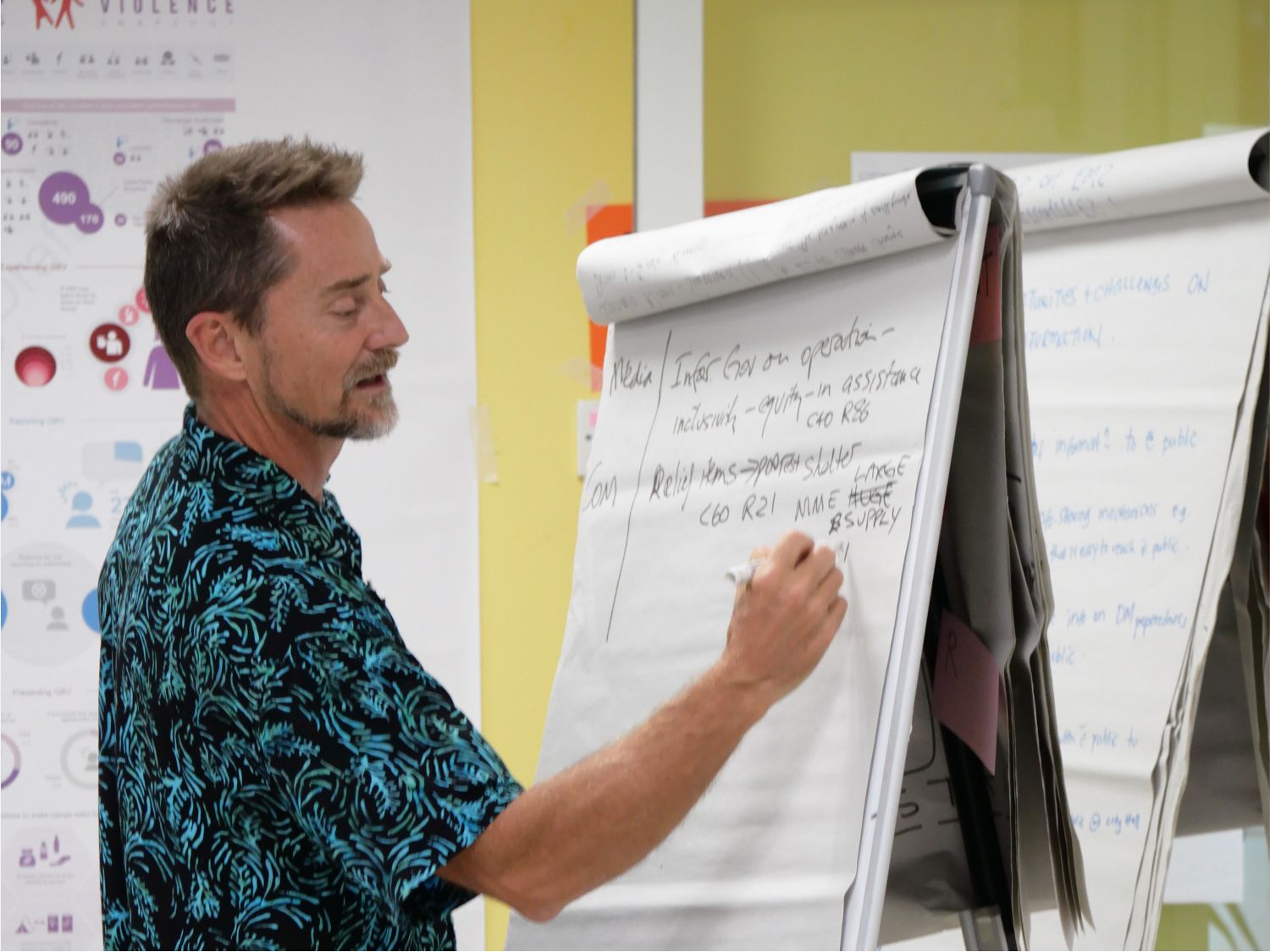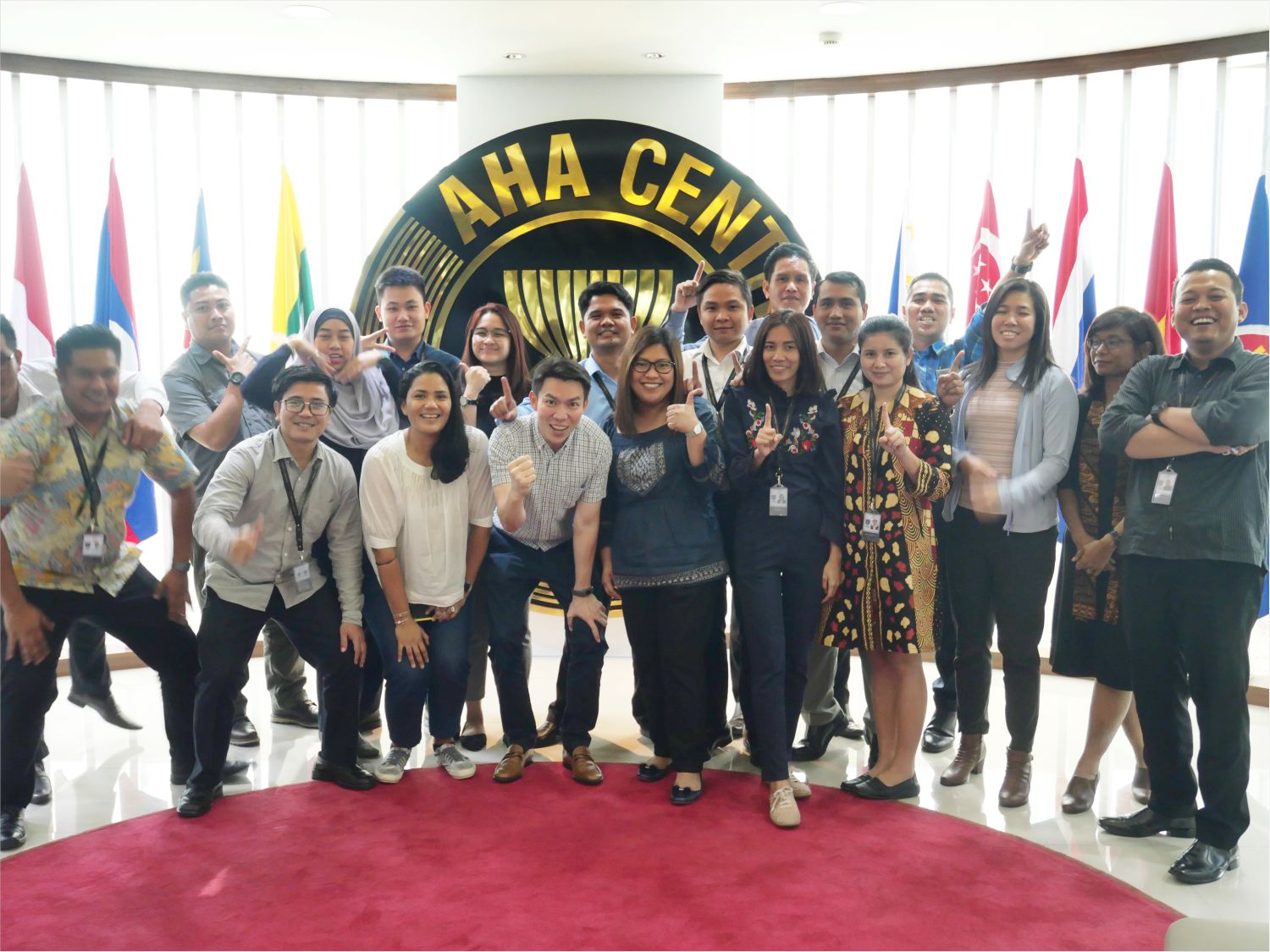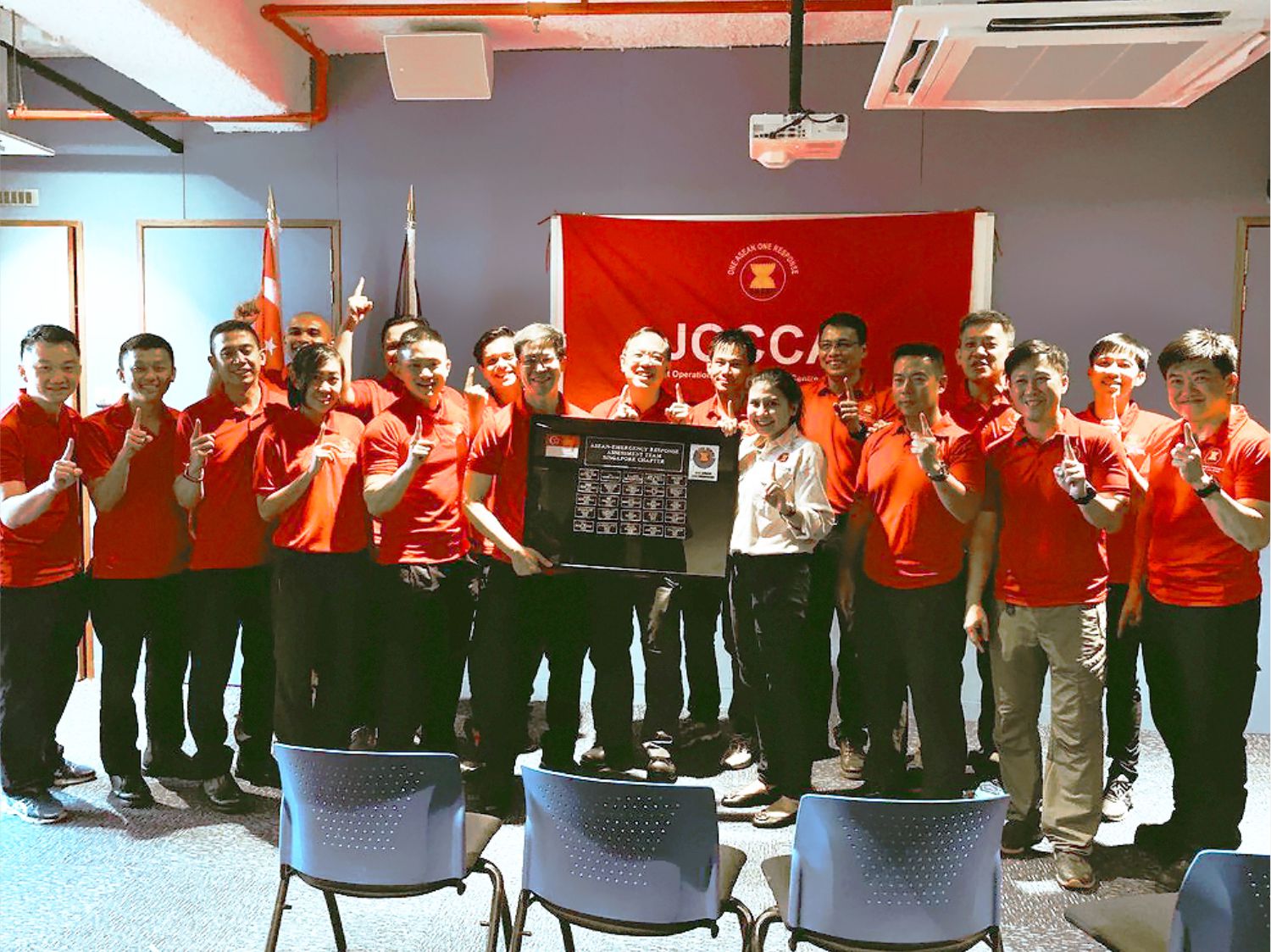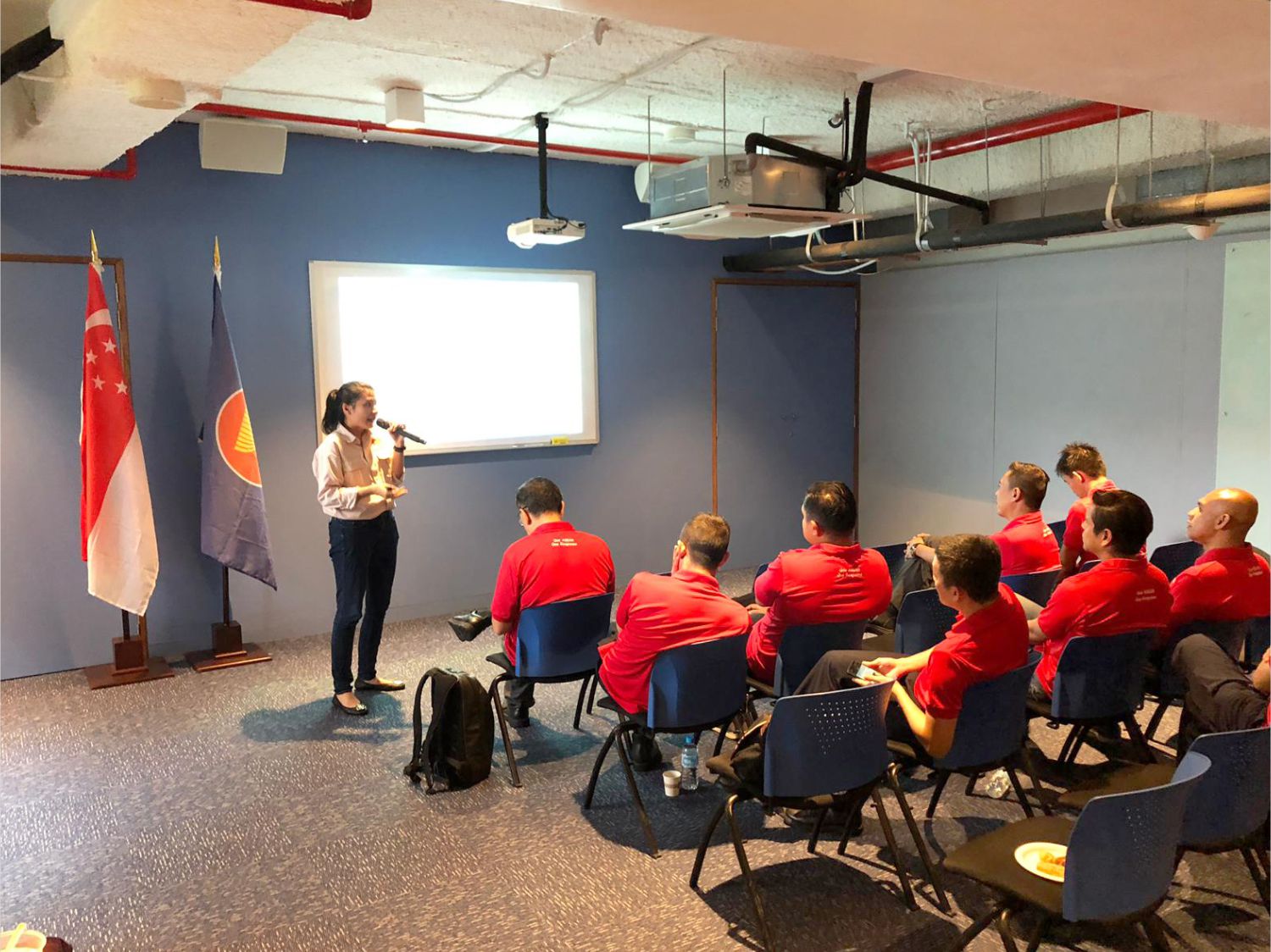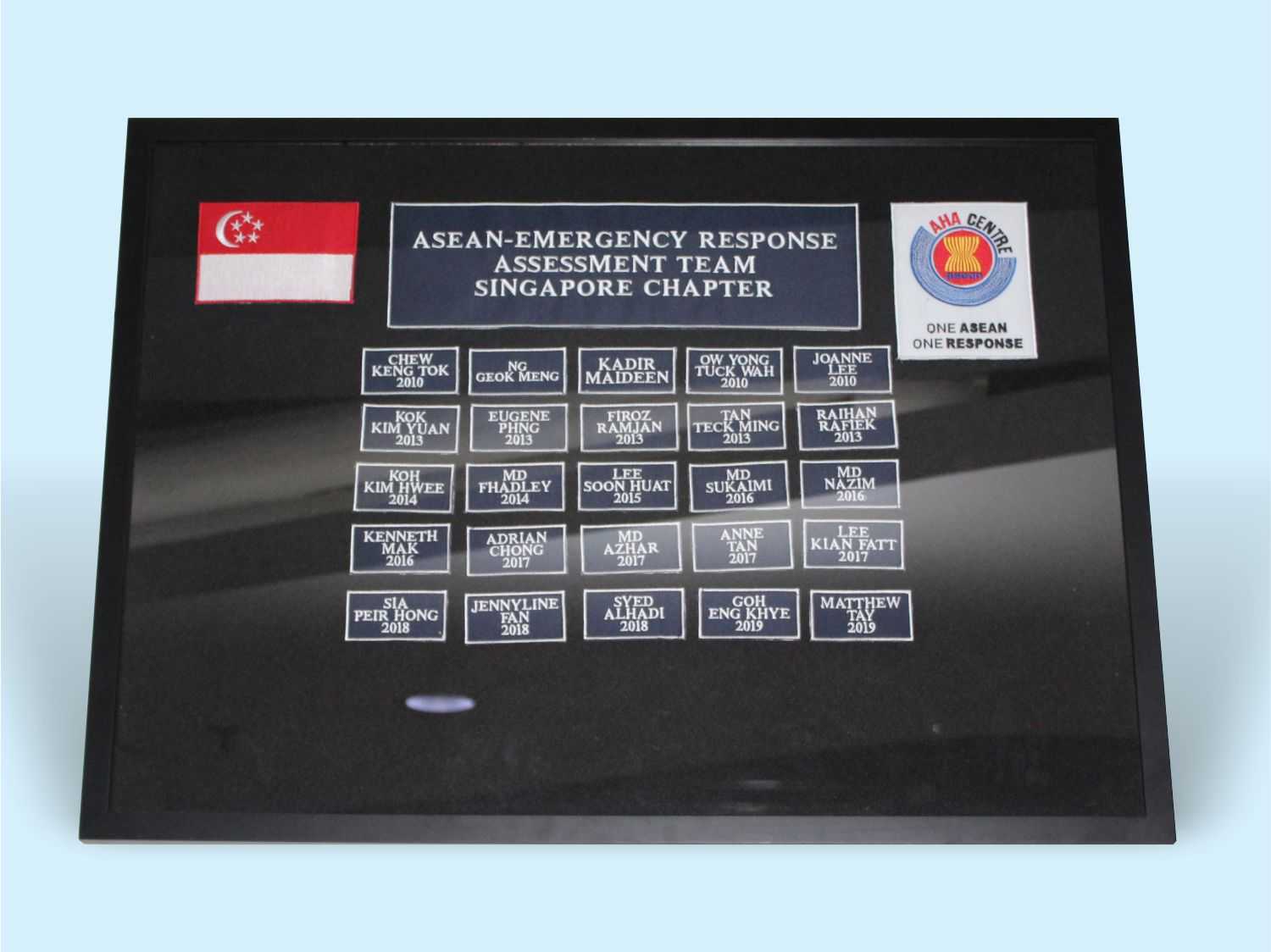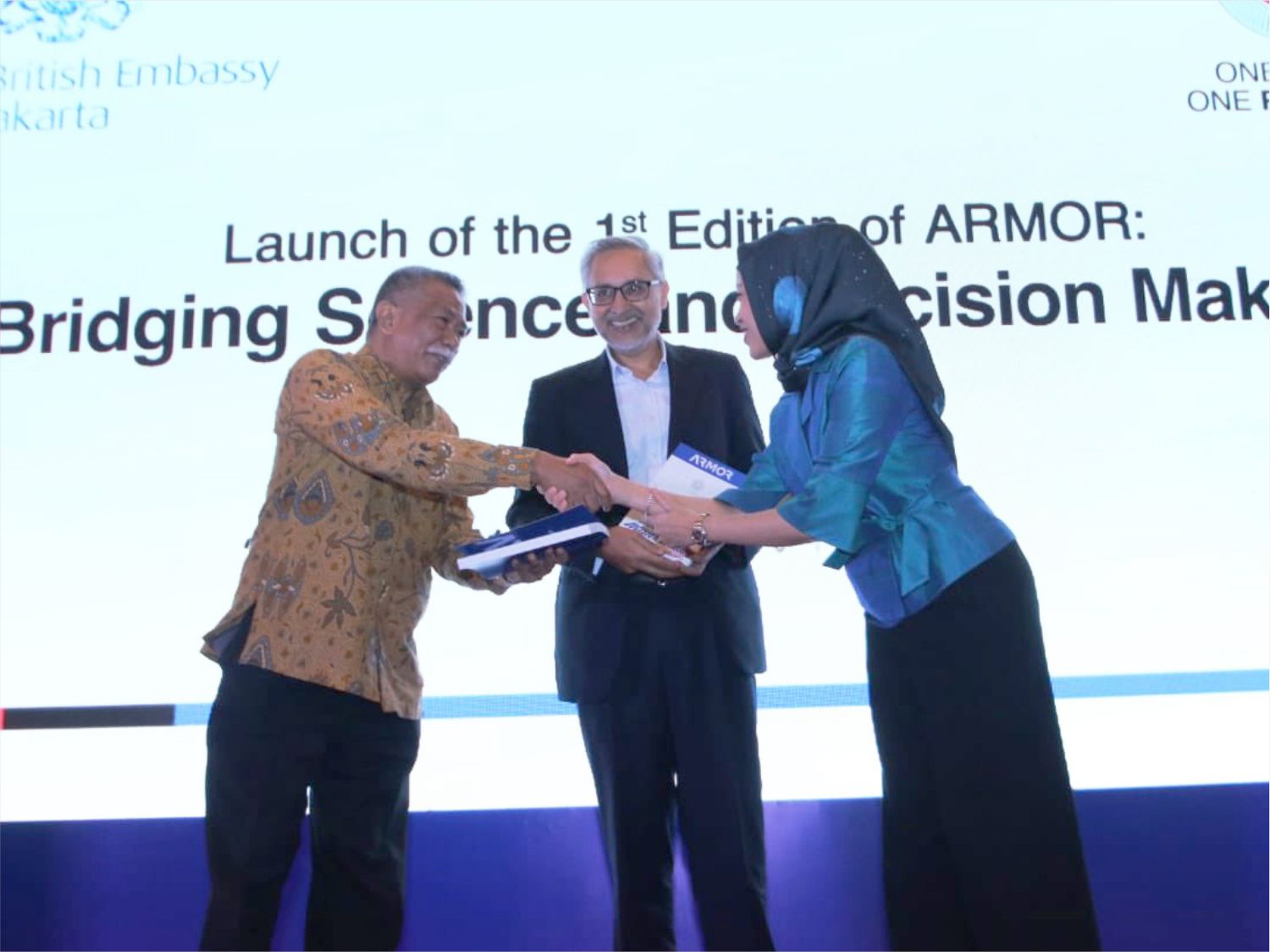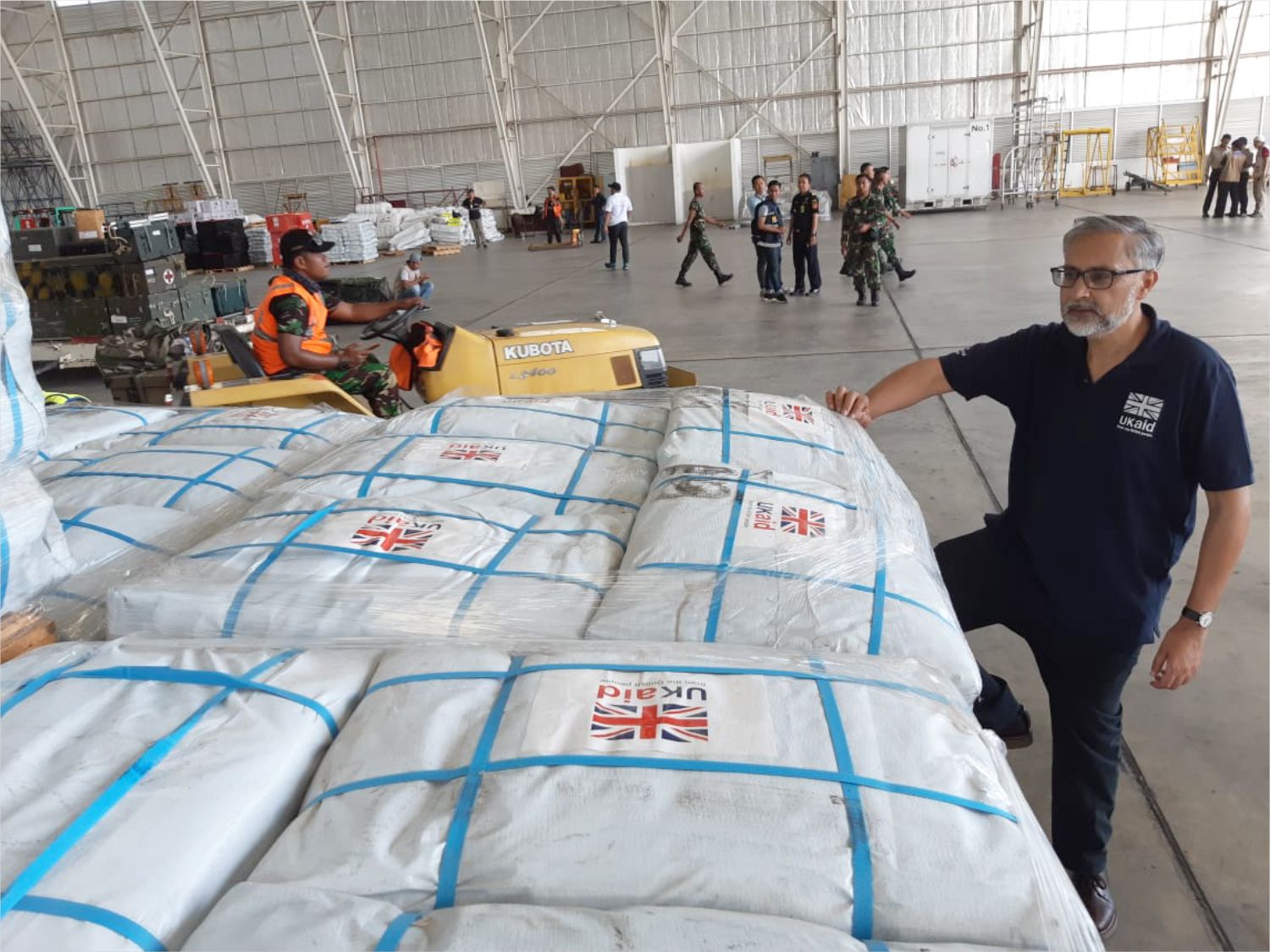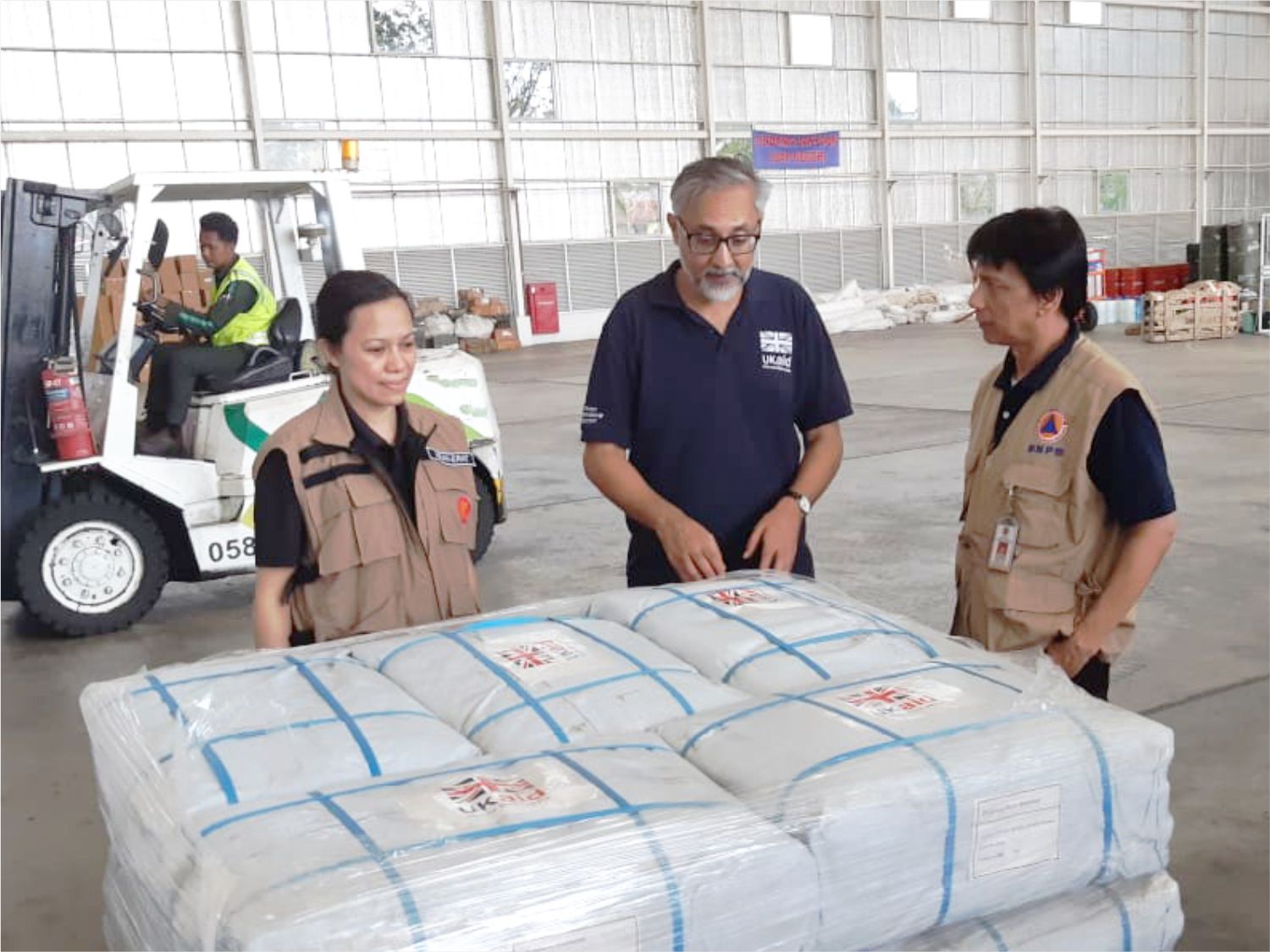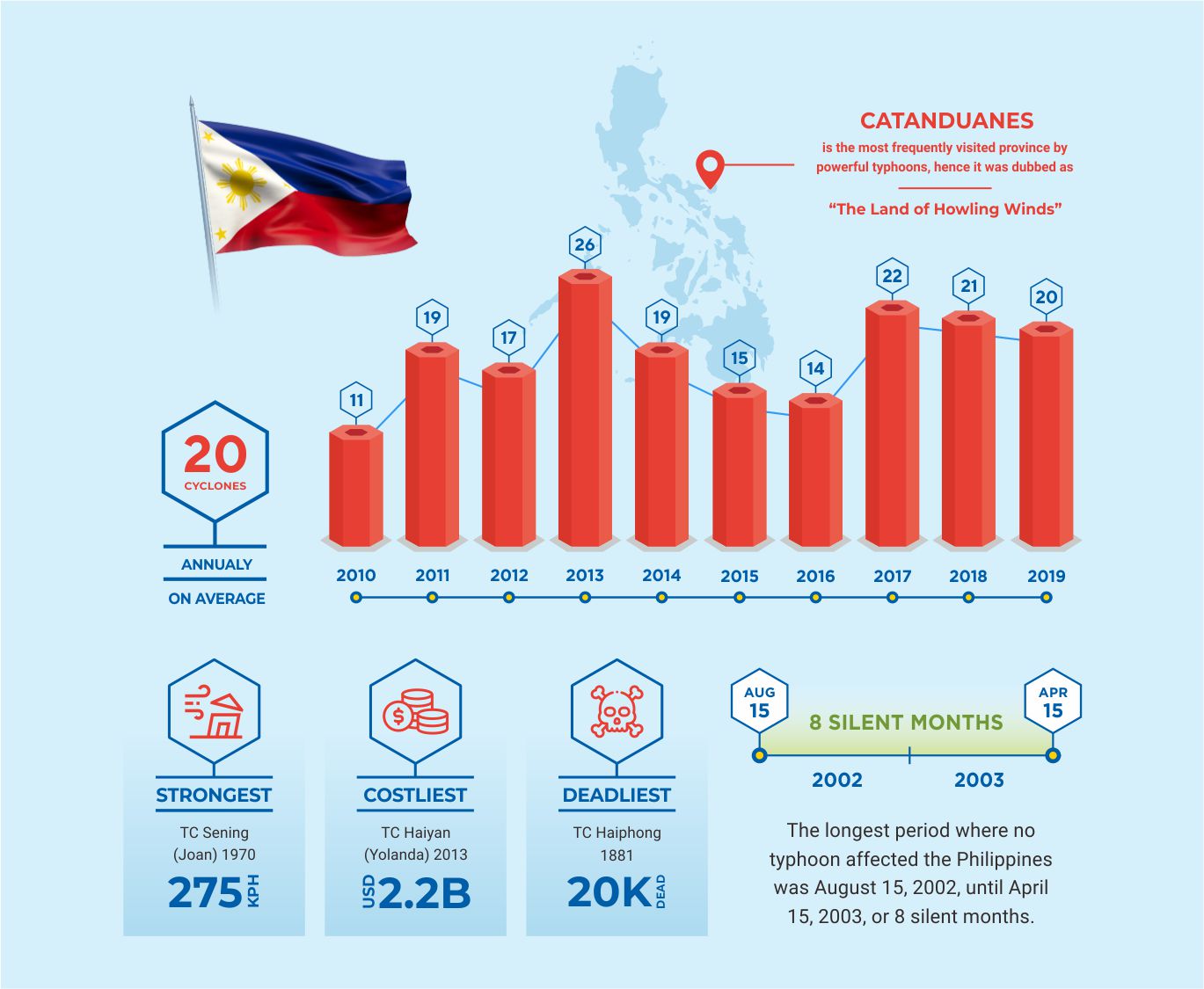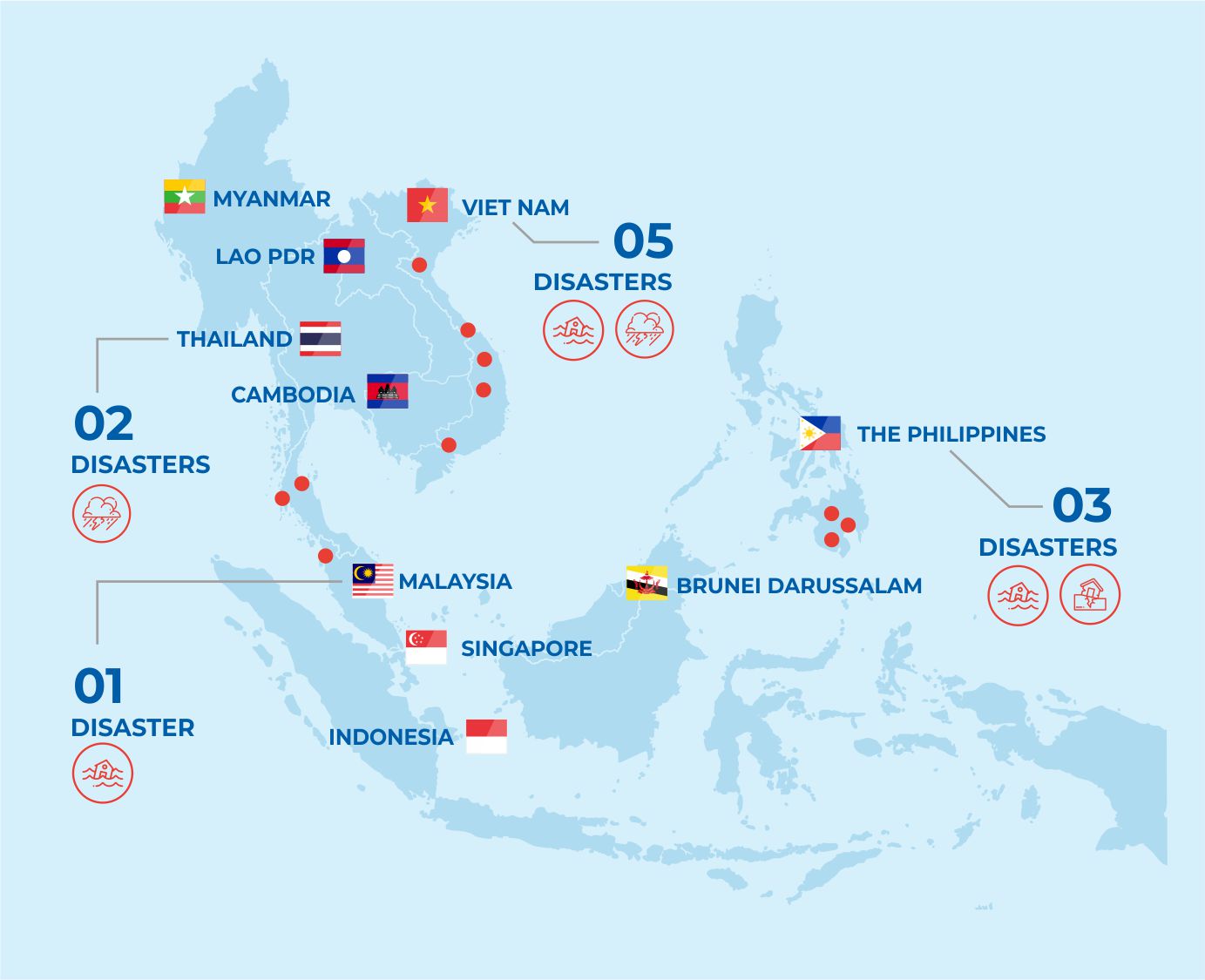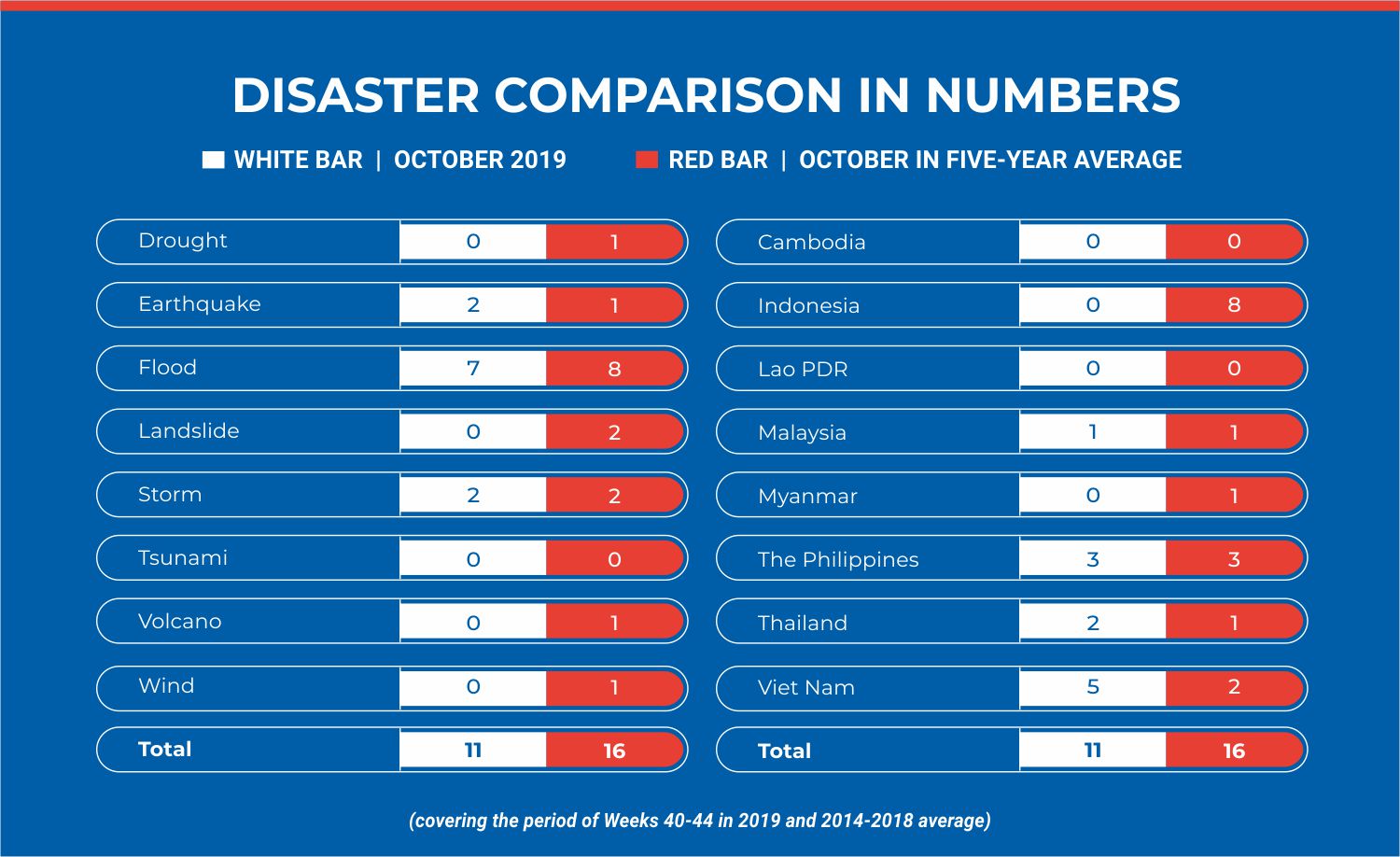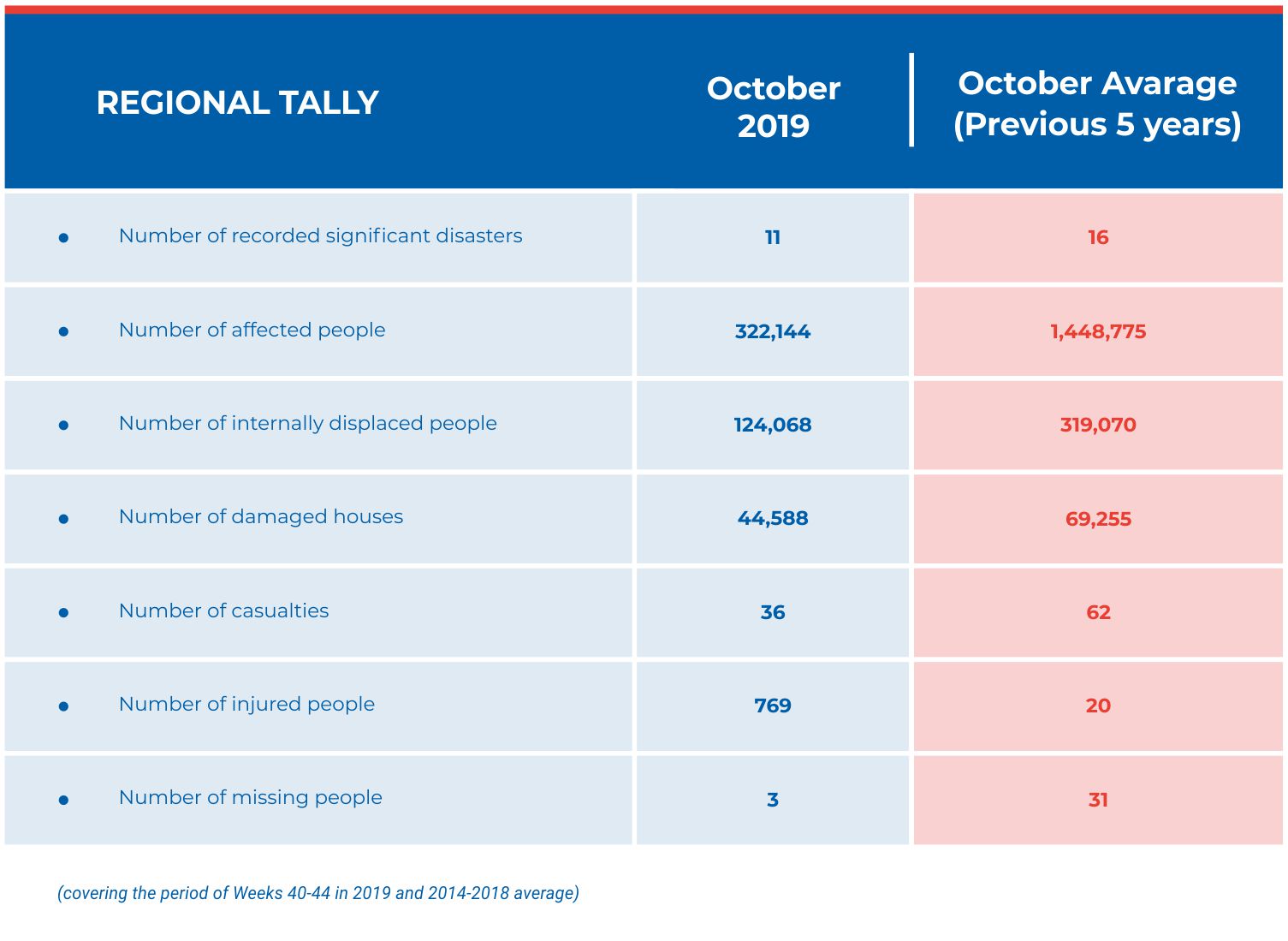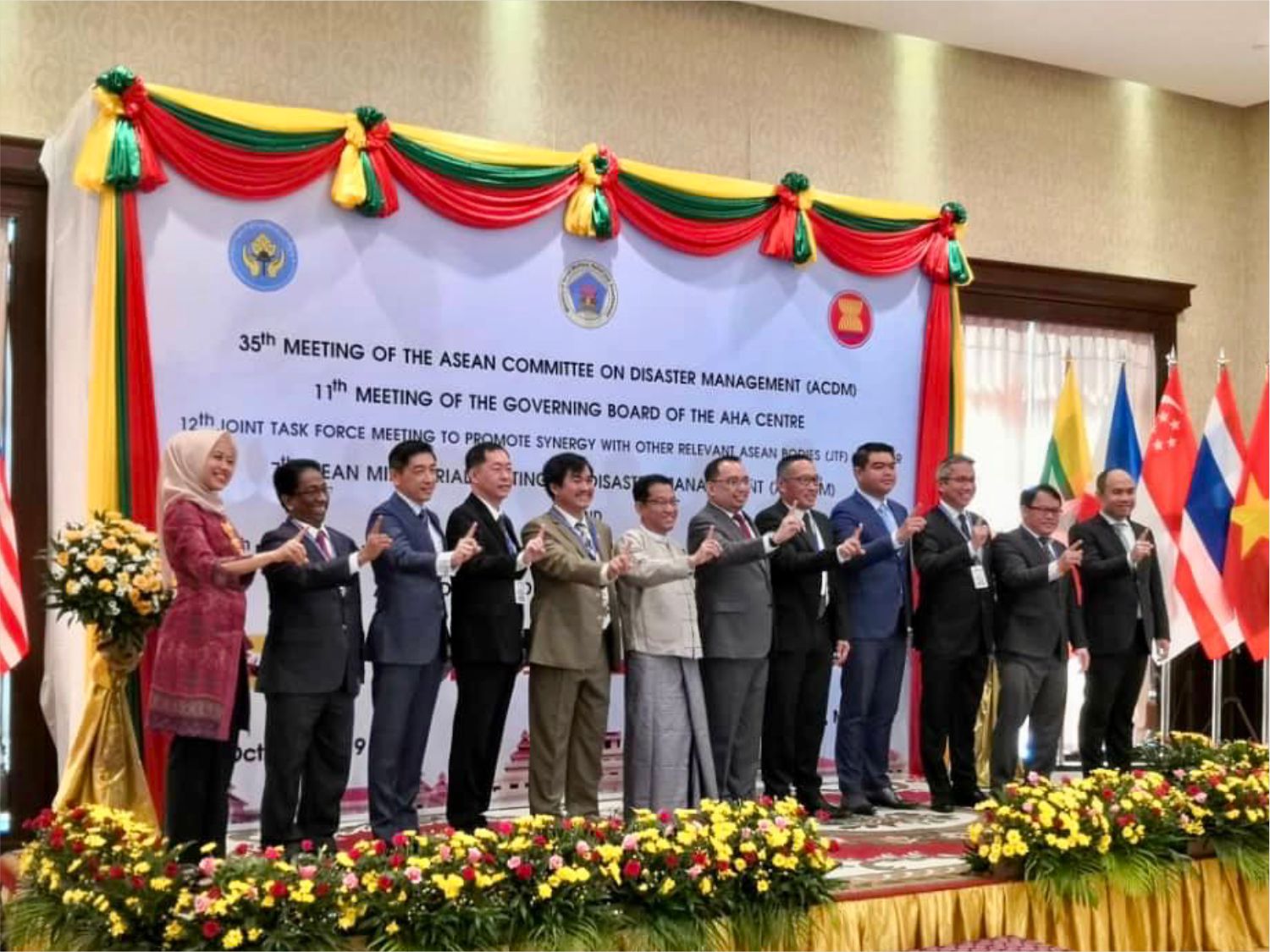Vol 56-ALISTAIR COOK

ALISTAIR COOK
Alistair Cook is one of the ASEAN region’s leading academics in the disaster management field, and has been engaged with the AHA Centre and its work not long often the organisation was founded during 2011. He currently sits as a senior fellow and coordinator of the humanitarian assistance and disaster relief programme at the Centre for Non-Traditional Security (NTS Centre) at S. Rajaratnam School of International Studies (RSIS), Nanyang Technological University, Singapore.
As Alistair explains, “this basically means i am in a team of five researchers that focus on humanitarian affairs in the Asia-Pacific, tracking longer-term trends, understanding localised contexts, and reflecting on past experiences to inform policymaking today and planning for the future”.
His journey to his current situation is full of experience, with Alistair arriving in Singapore in July 2009 to take on a position as a post-doctoral fellow on the John D. and Catherine T. MacArthur Fund Asia Security Initiative at RSIS. “At that time, the MacArthur Foundation had selected RSIS, through the leadership of the NTS Centre, as a core institution to head and lead research in Cluster 3 on Internal Challenges in 2009” Alistair explains. Prior to that, Alistair completed his PhD studies at the University of Melbourne, Australia, focused on the emergence of regional humanitarian norms in the Southeast Asian region.
When asked about his interest in researching non-traditional security issues, Alistair highlights regional disaster management mechanisms as of increasing importance. “Non-traditional security threats are issues that pose challenges to societal wellbeing, yet have varied levels of interest by decision-makers in governments and non-governmental actors compared to higher profile security issues like interstate conflict, terrorism and nuclear proliferation” Alistair tells us. He continues to explain that such NTS issues affect more people, and pose longer-term challenges to states and societies. “This is particularly important in Southeast Asia, where countries in the region face natural hazards as well as internal conflicts that threaten the safety and security of people and states” he says. Alistair then continues to explain the context of disaster management and emergency response as policy issue areas that States and societies in Southeast Asia can cooperate on for the mutual benefit of the entire region and its people. “This area of cooperation provides policymakers with insight into developing people-centric and whole-of-society approaches, and through my academic research and reflection I hope to offer insights and constructively contribute to this policy area.
Alistair also talks about the AHA Centre’s role in the region, and how he sees it into the future. “I think AHA Centre knows its strengths and is building upon them, however there is still work to be done on communicating to others on what this role is” he explains. “I imagine that stronger linkages to other relevant entities in the international community and at the sub-national level will be growth areas as we move forward to implementing the ASEAN Vision 2025 on Disaster Management.”
Finally, Alistair also highlights the future for increasing interaction between the scientific sector and decision-makers in disaster management, identifying the need for balance and understanding the value of ‘slow-burn’ research activities. “If we’re not able to take a step back and reflect on the whole picture, then it will ultimately affect our ability to be relevant and offer insights from our research” he reminds us. Alistair states that while sometimes academics are able to offer more immediate observations, their research space is an area worth protecting to allow for reflection and critical engagement with the actions, directions and trends emerging in the region over longer periods of time.
“For humanitarian affairs this is all the more important” he says, “as we’re often in a fast-paced environment with relatively little time spent to reflect on the actions and direction of the sector”.
Written by William Shea : | Photo : AHA Centre
- Published in The Other Side
Vol 56-ACE PROGRAMME DIARY OCTOBER

ACE PROGRAMME DIARY OCTOBER
During October 2019, participants in the AHA Centre Executive (ACE) Programme batch sixth undertook a range of activities in their journey towards becoming ASEAN’s disaster management leaders. The following diary entries were developed by the team to reflect on their engagements during the month.
After ACE Programme participants returned from New Zealand, the beginning of October saw them conduct a mid-term review. The activity reviewed the course and evaluated it against the four components that aim to be achieved by participants in the course.
Following this activity, participants then engaged in Camp Coordination and Management sessions with the International Organisation for Migration (IOM). The course covered several topics, including identifying actors, protection and vulnerable people, camp standards, and information management. During these sessions participants also learnt more about the complexity of human displacement including the differences between, for example, internal displaced persons (IDPs) and refugees, as well as more about causes of their displacement (such as conflict or natural disaster).
From 14-16 October, ACE Programme participants then undertook in-depth learning on ASEAN-UN Civil-Military Coordination with UNOCHA-ROAP. The participants gained understanding of the essential elements to protect and promote humanitarian principles, avoid competency, minimise inconsistency, and pursue common goal with military actors in disaster response. Facilitators explained the basic principles, guidelines, and practical actions of ASEAN-UN Civil-Military Coordination, as it is essential for disaster managers to understand the framework of civil-military coordination in order to perform effective international relief operations.
Following this course, participants then undertook a two-day course on Crisis Leadership and System Thinking, which was facilitated by the Daniel K. Innouye Asia-Pacific Center for Security Studies (DKI-APCSS), Hawaii. As the world becomes increasingly volatile, uncertain, complex and ambiguous (VUCA), it is important for emerging leaders to improve skills in systems thinking, developing and implementing strategic approaches for future complex problems. The course included modules on complexity and systems thinking, futures thinking and crisis gaming. In this course, ACE Programme participants exercised their adaptability to rapid change by engaging in crisis games.
October then saw all ACE Programme participants travel to Japan to attend a course on Japan’s Recovery and Resilience, delivered by the United Nations University – Institute for the Advanced Study of Sustainability (UNU-IAS). This formed a unique visit as during the previous week some parts of Japan were impacted by Typhoon Hagibis, allowing participants a direct insight into the response and the recovery efforts after the typhoon. Disaster Risk Reduction (DRR) was also one of the main themes of the study visit, which saw participants looking at disaster management from a slightly different angle – one that focuses on risk reduction, instead of response. Japan is well-known for its strong safety culture, with participants learning what was required to build such culture from the visit to the Ministry of Education, Culture, Sports, Science & Technology (MEXT), who oversees disaster prevention and response education in schools.
Participants also travelled from Tokyo to Tsukuba prefecture to visit the JAXA Tsukuba Space Centre, the National Research Institute for Earth Science and Disaster Resilience and the National Institute for Environmental Studies – all of who contribute to Japan’s Disaster Risk Reduction efforts in their areas of expertise. Another unique aspect introduced in during the visit related to the area of government-private partnerships, with participants taking part in a seminar organised by Japan International Public-Private Association for Disaster Risk Reduction (JIPAD). The week ended with participants travelling to Osaka and Kobe. As a large part of Osaka sits below sea-level, the participants learnt first-hand about the various infrastructure innovations that the government has put in place to protect the city.
Written by : Rina Nur Hafizah, Sridewanto Edi Pinuji, Amelia Justina Lim, Ram Chum Mang, Putri Mumpuni | Photo : AHA Centre
- Published in AHA Centre Diary 2
Vol 56-3RD ASEAN-ERAT SINGAPORE CHAPTER WORKSHOP DIARY

3RD ASEAN-ERAT SINGAPORE CHAPTER WORKSHOP DIARY
The third ASEAN-ERAT Singapore Chapter Workshop was held on 25 September 2019 at the iconic Marina Barrage. The event was organised a day after Singapore hosted delegates for the 7th ASEAN-ERAT Advisory Group and 5th ASEAN-ERAT Project Steering Committee meetings.
The annual event started in 2017 by the Singapore Civil Defence Force (SCDF), serves to update members of the Singapore Chapter on recent development on ASEAN-ERAT, share information from recent ASEAN-ERAT missions and induct new ASEAN-ERAT members into the Singapore Chapter.
Members attending this year’s event had the privilege of getting first-hand updates from Ms Grace Endina from the AHA Centre. She briefed the participants on the progress of the ASEAN-ERAT transformation plan and training development programmes for ASEAN-ERAT. Following this, Ms Laina Henderson, a consultant currently attached to the AHA Centre by the UK government engaged the participants to discuss challenges, future roles and vision for the ASEAN-ERAT for the year 2021 to 2025.
Finally, Ms Anne Tan and Ms Sia Peir Hong in responding to a humanitarian assistance mission to Myanmar and in attending a Hostile Environment Awareness Training (HEAT) in Australia, shared their experience respectively. The sharing session was useful to the participants for it enabled them to understand the security challenges that could affect them physically and emotionally during a mission and prepare them for future deployment.
To commemorate this year’s event, the workshop organisers Mr Matthew Tay and Mr Goh Eng Khye, members of ASEAN-ERAT from the recent Batch 11, initiated the pinning of the ASEAN-ERAT identification tags by the participants onto the self-designed ASEAN-ERAT Singapore Chapter Board. Henceforth, the board will be used at future Singapore Chapter events to welcome new ASEAN-ERAT members from Singapore. A duplicate of the inaugural Singapore Chapter Board was created and presented to the AHA Centre.
The event concluded with Mr Ow Yong Tuck Wah, a founding member of Singapore’s ASEAN-ERAT, thanking all participants for their presence, active involvement and good camaraderie forged over the two days during the workshop and meetings. He also expressed SCDF’s appreciation to the AHA Centre delegates – Ms Grace Endina, Ms Laina Henderson and Ms Sulastri Sulaiman – for their support and commitment throughout the Singapore Chapter event.
Written by : Matthew Tay and Goh Eng Khye | Photo : AHA Centre
- Published in AHA Centre Diary 1
Vol 56 – THE GOVERNMENT OF THE UNITED KINGDOM AND THE AHA CENTRE’S INNOVATIVE PARTNERSHIP

THE GOVERNMENT OF THE UNITED KINGDOM AND THE AHA CENTRE’S INNOVATIVE PARTNERSHIP
The AHA Centre is continuously striving to improve the ASEAN region’s efforts in responding to and managing disaster. Starting in 2017, the AHA Centre has been supported by the Government of the United Kingdom (UK) to undertake a range of innovative activities with a wide variety of disaster management stakeholders.
In 2017, the UK government – through the British Embassy in Jakarta – supported the AHA Centre initiative for Public-Private Partnerships dialogue. The AHA Centre’s aim to engage further with new stakeholders, especially from the private sector and the media, came about due to the increasing importance of Public-Private Partnerships (PPP) in disaster management. It was becoming increasingly apparent that the immense resources required to manage disasters in the region could not be achieved by the AHA Centre alone, and therefore the need for active, coordinated and strategic participation from other stakeholders became a priority. The event featured an interactive high-level panel dialogue with prominent speakers. Momentum from the event was used to gain insights and discussion with potential partners, to then build innovative partnerships for developing a more resilient ASEAN community. The role of the AHA Centre as the primary regional coordinating agency in disaster management in the ASEAN region is also to promote good PPP practices across the region for managing disaster preparedness, response and recovery efforts.
Continuing this innovative partnership, early in 2019 the AHA Centre launched the first edition of the ASEAN Risk Monitor and Disaster Management Review (ARMOR). The report – which contains a collection of ten chapters by disaster management experts and practitioners – provides new analysis and insights on the science behind disaster management, and its applicability to policy making. A key aim of ARMOR is to bridge the gap between science and decision-making in disaster management, with the launch event opening discussions between scientists and decision-makers. The report addresses the various aspects of disaster management in Southeast Asia today, ranging from climate change, disaster monitoring systems, early warning systems, technological accidents triggered by natural hazards (NATECH), and strategy, policy, and practice in disaster management. The production of this publication was supported by the Government of the United Kingdom, again through the British Embassy in Jakarta.
Written by : Ina Rachmawati | Photo : AHA Centre
- Published in Partnership
Vol 56 – TYPHOONS IN THE PHILIPPINES

TYPHOONS
IN THE PHILIPPINES
For November the Colum volume 56 we cover the most frequent hazard that visits The Philippines – Typhoon.
WHAT’S THE DIFFERENCE?
Did you know that Typhoon, Hurricane and Cyclone are all essentially the same? As they are all types of tropical storms. The only difference is where they are located.
They are given different names depending on where they appear. Hurricanes are tropical storms that form over the North Atlantic Ocean and Northeast Pacific. Cyclones are formed over the South Pacific and the Indian Ocean. Typhoons are formed over the Northwest Pacific Ocean.
FREQUENCY OF TYPHOON IN THE PHILIPPINES
The Philippines is the most typhoon visited country in the world with an average of 20 tropical cyclones annually. For the past 10 years, 2013 was the year when the Philippines experience more than 25 typhoons in a year, that is nearly once every two weeks on average.
With the strongest was TC Sening (Joan) in 1970 – 275 kph. Costliest, TC Haiyan (Yolanda) 2013 – USD 2.2B and Deadliest with TC Haiphong 1881 – 20K Dead.
Catanduanes is the most frequently visited province by powerful typhoons, hence it was dubbed as “the land of howling winds”
THE NAMING OF TROPICAL CYCLONE
Ever wonder how typhoons get their names? And why do they have names at all? Meteorologists long ago learned that naming tropical storms and hurricanes helps people remember the storms, communicate about them more effectively, and so stay safer if and when a particular storm strikes a coast. These experts assign names to Typhoons according to a formal list of names that is approved prior to the start of each hurricane season.
When does a storm receive a name? Tropical storms are given names when they display a rotating circulation pattern and wind speeds of 63 kilometres per hour. A tropical storm develops into a hurricane when wind speeds reach 119 kph.
The Philippines is the only country in the world that has its own system of naming tropical cyclones. The first tropical cyclone in the Philippines to be assigned a male name was Tropical Depression “BAROK”.
The Philippines repeats the same Typhoon local name every four years but had retired 10 names which exceeded 300 deaths and USD 20M damage cost to agriculture.
The longest period where no typhoon affected the Philippines was August 15, 2002, until April 15, 2003, or 8 silent months.
Source: Earthsky.org, NDRRMC, PAGASA and Typhoon2000
Written by : Lawrence Aporto and Ina Rachmawati
- Published in Insight
Vol 56-MONTHLY DISASTER REVIEW AND OUTLOOK

MONTHLY DISASTER REVIEW AND OUTLOOK
OCTOBER 2019 | DISASTER MONITORING & ANALYSIS
(DMA) UNIT, AHA CENTRE
GENERAL REVIEW OF OCTOBER 2019
During the month of October 2019 there were 11 reported disaster events in the ASEAN region, which registers 31% lower than the average of disaster occurrences for October over the previous five years (16). There were only 3 types of disaster events recorded in October 2019 (flood, landslide and storm), compared to 7 types recorded in the last five years for the same period. For the last five years there have been reports of drought, landslide, volcanic activity and wind events, however such disaster types were not recorded for October 2019. Also of note during this period were the comparatively low numbers of displaced, dead and injured persons, as well as damaged houses, despite the impact of the series of earthquakes that occurred in Cotabato province, southern Philippines. Three strong earthquakes with a magnitude above 6.0 rocked the province during October 2019, which aside from initial damage, also prolonged the local population’s displacement, with a majority damage experienced by residential homes (95% of the total damaged infrastructures). Earthquakes in Cotabato also claimed 24 lives from the total recorded 36 deaths for the month.
In general, this period has been dominated by hydro-meteorological events for the last five years, primarily by floods (51%) that usually affected and displaced population. This pattern is related to the tropical cyclone season in the Pacific, which brings above- normal rainfall to flood-prone areas in Southeast Asia. This was the case during October 2019, with seven of the 11 reported disasters related to flooding.
In terms of geological hazards, there were 34 seismic activities with a magnitude of 5.0 and above that occurred within October 2019, with 24 events experienced in Indonesia (BMKG), and 10 in the Philippines (PHIVOLCS) – including the three destructive earthquakes in Cotabato province. There were also three volcanic activities monitored in Indonesia, although all were categorised as Level II alert, and posed no danger to the population.
SEASONAL OUTLOOK
According to the ASEAN Specialised Meteorological Centre (ASMC), the inter-monsoon period usually transitions into the Northeast Monsoon season during November or early December. The Northeast Monsoon season will bring generally dry conditions to the northern ASEAN region, with rain to the southern ASEAN region. While rainy conditions over most of the equatorial and southern ASEAN region are expected in the next three months (November 2019 to January 2020), the rainfall is forecast to be below-average, due to the positive phase of the Indian Ocean Dipole (IOD). Amidst the dry conditions in the northern ASEAN region, there is an increased likelihood for above-average rainfall for the northernmost parts (northern parts of Laos, Myanmar and Viet Nam).
For the next 3 months the ASMC also forecasts above-average temperatures for most parts of the ASEAN region, and this may also contribute to isolated hotspot activities in the southern ASEAN region during November 2019. In terms of El Niño and La Niña, the current state remains in neutral condition, and is forecast to remain as such for the rest of 2019 and into early 2020.
Data Sources: ASEAN Disaster Information Network, ASEAN Specialised Meteorological Centre
Written by : Lawrence Anthony Dimailig, Shahasrakiranna, Lawrence Aporto, and Justin Chin Jin Jie
DISCLAIMER
Disclaimer: AHA Centre’s estimation is based on data and information shared by National Disaster Management Organisations (NDMOs) and other relevant agencies from ASEAN Member States, international organisations and news agencies. Further information on each recorded-significant disaster, description and detail of data and information are available at: http://adinet.ahacentre.org/reports.
- Published in Monthly Disaster Outlook
Vol 56 – 11TH MEETING OF THE GOVERNING BOARD OF THE AHA CENTRE

11TH MEETING OF THE GOVERNING BOARD OF THE AHA CENTRE
October the 2nd 2019 saw the 11th Meeting of the Governing Board of the AHA Centre take place in Nay Pyi Taw, Myanmar, which was followed by the 7th ASEAN Ministerial Meeting on Disaster Management (AMMDM) and the 8th Meeting of the Conference of the Parties (COP) to the ASEAN Agreement on Disaster Management and Emergency Response (AADMER) on October 4th. To round of the busy schedule, the Governing Board convened back-to-back with the 35th Meeting of the ASEAN Committee on Disaster Management (ACDM) and the 12th Meeting of the ASEAN Joint Task Force to Promote Synergy with Other Relevant ASEAN Bodies on Humanitarian Assistance and Disaster Relief – all of which took place between 1 – 3 of October.
The Governing Board received an update from the AHA Centre regarding a range of activities and programmes that had taken place throughout the previous period, including updates on such things as preparations for the 2020 ASEAN Regional Disaster Emergency Response Simulation Exercise (ARDEX-2020) with the Philippines, implementation of Level 2 ASEAN Emergency Response and Assessment Team (ASEAN-ERAT) courses, and the development of the ICT Roadmap on Disaster Management for 2025 and Beyond. The Governing Board also received updates on the development and launching of the Disaster Emergency Logistics System of ASEAN (DELSA) Satellite Warehouses – in both the Philippines and Thailand – that took place during the middle of 2019.
Of particular note to the Governing Board was the ongoing ASEAN Village recovery project, implemented by the AHA Centre in Palu, Central Sulawesi, Indonesia. This project has utilised generous financial support from Brunei Darussalam and the Philippines to support communities affected by the earthquake, tsunami and liquefaction disasters that struck the region in September 2018. The AHA Centre also appreciated support from the Government of Australia to strengthen the project’s management, and highlighted the potential of further support arriving from other parties.
The Governing Board also encompassed and afforded support to the AHA Centre’s plan to – as part of its 8th anniversary – conduct a visioning exercise to re-think how the AHA Centre can further enhance its services to support ASEAN as the primary regional coordinating agency on disaster management and emergency response. The effort would include workshops to determine if AHA Centre could contribute towards the provision of humanitarian assistance during human-induced disasters. The Governing Board maintained that the AHA Centre must focus on its existing mandates through enhancing its core services in disaster management and emergency response, as well as ensuring synergy, adaptability and readiness of its systems, procedures and skills to potentially provide humanitarian assistance to other types of disasters.
The meeting also resulted in the Governing Board adopting the Financial Status of the AHA Centre, as well as the AHA Centre Budget for 2020. Recent successful external audits were also highlighted, with the AHA Centre successfully completing such audits for all externally funded projects through the Japan-ASEAN Integration Fund (JAIF) as well as the AHA Centre Fund. Options for strengthening financing mechanism will also be explored, to help ensure the region is more self-reliant in the funding of emergency response operations and deployment of ASEAN-ERAT.
Written by : William Shea | Photo Credit : AHA Centre
- Published in Highlight

